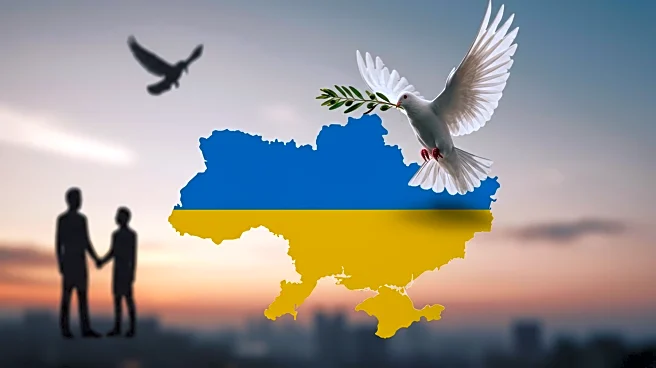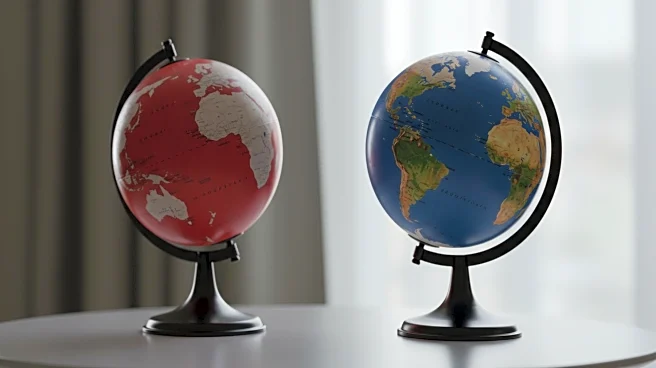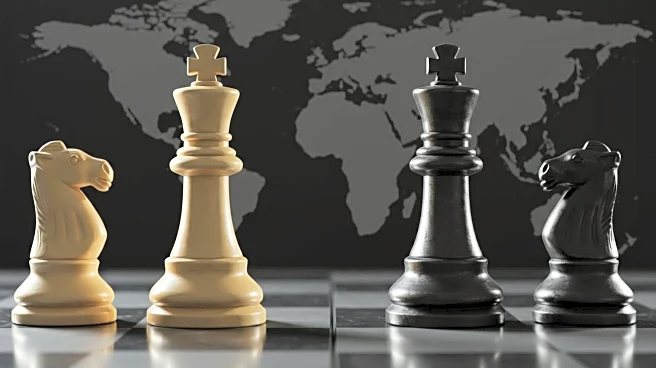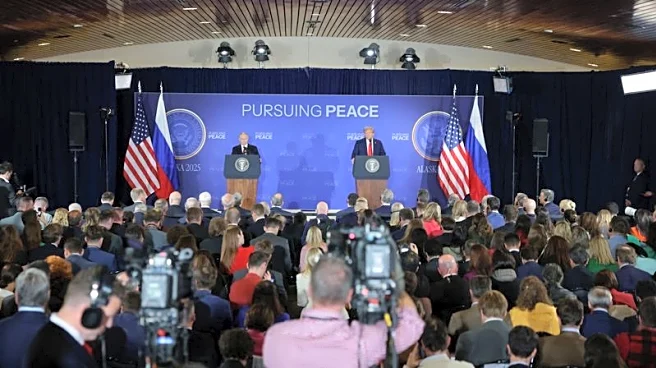What's Happening?
The summit between President Trump and Russian President Vladimir Putin in Alaska concluded without a formal deal, but marked a significant shift in Trump's approach to the Ukraine conflict. Trump dropped his demand for a ceasefire, advocating instead for a comprehensive peace agreement. This decision aligns with Russia's position and allows for continued military operations in Ukraine. The summit was a PR victory for Putin, who received a red-carpet welcome and engaged in private discussions with Trump.
Why It's Important?
Trump's reversal on the ceasefire demand could have profound implications for the geopolitical landscape. By endorsing a peace agreement over a ceasefire, Trump may be perceived as aligning more closely with Russia's interests, potentially affecting U.S.-Ukraine relations and European allies' strategies. The lack of a ceasefire agreement allows Russia to continue its military operations, which could lead to further territorial gains. This development may also influence future diplomatic engagements and the role of the U.S. in mediating the conflict.
What's Next?
Ukrainian President Volodymyr Zelensky is scheduled to meet with Trump in Washington, where discussions may include the possibility of a trilateral summit involving Putin. The outcome of these meetings could shape the next steps in the peace process and determine the level of U.S. involvement in securing a resolution. European leaders are expected to continue advocating for a ceasefire as a prerequisite for peace talks.
Beyond the Headlines
The summit highlights the complex dynamics of international diplomacy, where strategic interests often overshadow humanitarian concerns. Trump's approach may reflect broader geopolitical calculations, including the desire to reposition the U.S. as a key negotiator in global conflicts. The ethical implications of ceding territory for peace raise questions about the balance between sovereignty and stability.












